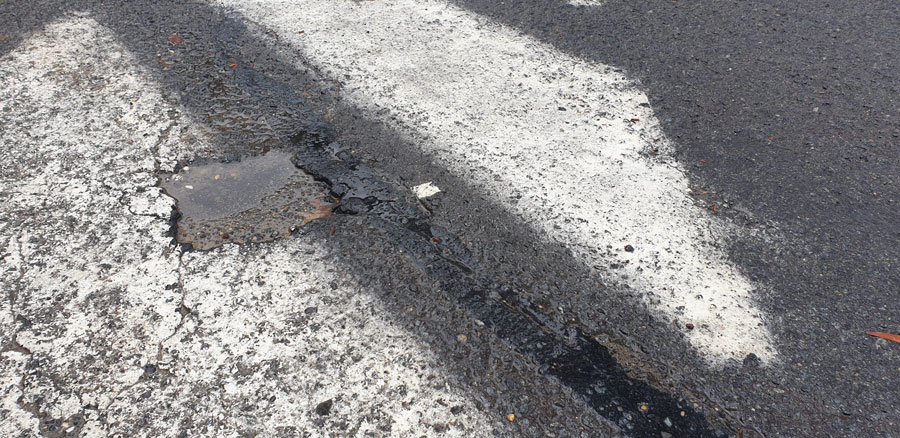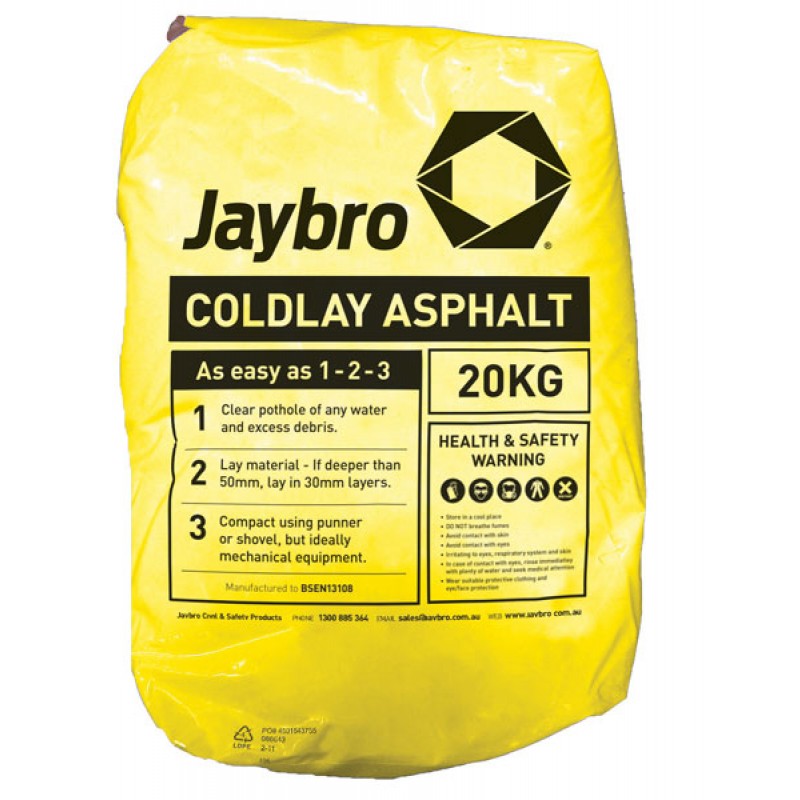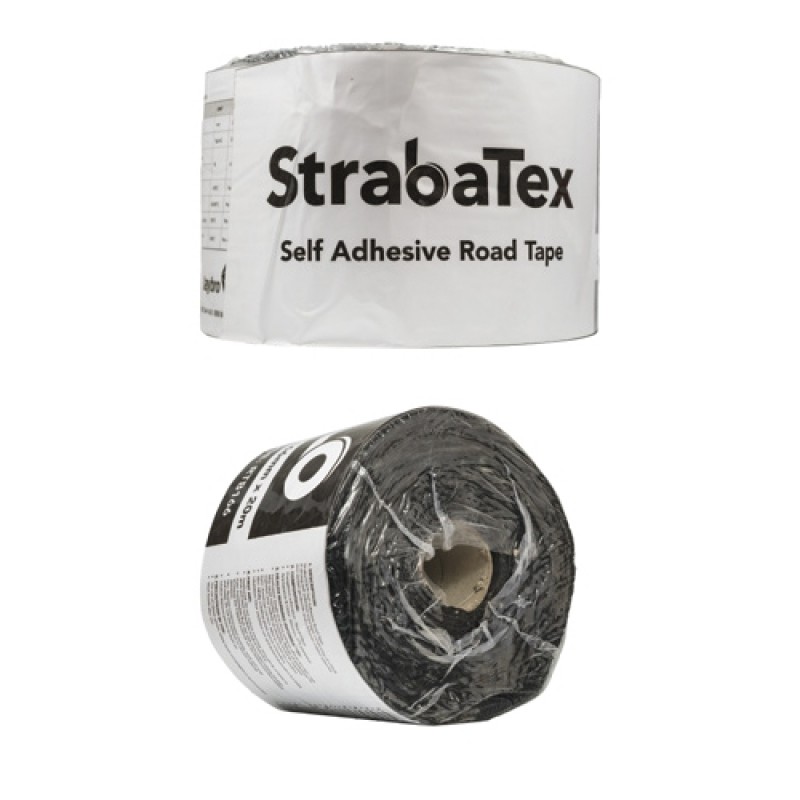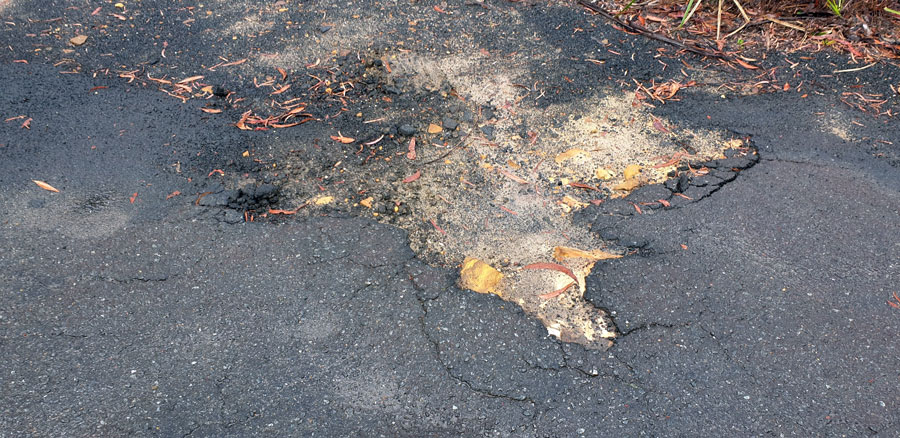How to fix potholes and cracks in asphalt

How to repair asphalt and fill potholes for good with Jaybro Cold Lay
A step by step guide to repairing road surfaces with ‘cold mix’ or cold lay asphalt
Get the best finish on your road repair projects using Jaybro cold lay asphalt. This easy to apply aggregate and bitumen mixture allows road crews to complete repairs quickly and open the road to traffic immediately after applying.
What causes potholes and cracks in asphalt?
Even the best laid asphalt roads and pavements can eventually be affected by weather and heavy traffic, causing potholes and cracks to appear.
When asphalt cracks, water seeps in and it will continue to break up creating more voids, potholes and trenches.
That’s why it’s important to repair the road as issues arise, rather than leaving uneven or damaged surfaces for long periods without repair.
However, using hot mix asphalt is a time consuming, messy and expensive process, and is often overkill for smaller jobs. This is where cold mix asphalt can be an ideal solution.
 What is cold lay asphalt?
What is cold lay asphalt?
Cold lay is a simple solution for patching small areas of asphalt roads, driveways and pavements, enabling contractors to fix potholes, cracks and other flaws without the hassle and mess of hot asphalt application.
Jaybro cold lay asphalt is formulated to contain a viscous mixture of bitumen, aggregates and filler which results in a sticky tar slurry that can be used to quickly fill holes.
Cold mix is particularly useful for Council maintenance teams and roadwork crews working on smaller projects. It requires no mixing and is poured straight from the bag into the hole or crack.
How to use asphalt patching products like cold mix
First up – ensure you’ve safely closed the road and that you have a traffic management plan in place if necessary. Although using cold lay is a quick way to repair asphalt, it’s critical to ensure you follow your local safety, Council and road authority guidelines. Close the area off to traffic to keep your team safe, and ensure you have the necessary PPE available.
Then, make sure you sweep the asphalt surfaces and clean them up so they are completely free of loose material. The cold lay asphalt will give the best finish if applied to a clean area. You may need to use a hose or pressure sprayer to get a good clean, however, if you use water to clean the area make sure you dry off any standing water.
Next, make sure you’ve got a relatively fresh bag of cold mix: this product has a 12 month shelf life so check the manufacture date if your mix has been in storage for a while.
Then, simply pour the mixture into the hole. If the area is deeper than 50mm, we recommend laying the coldlay asphalt in 30mm thick layers. If you are filling a shallow pothole, it may be helpful to spread the material manually with a trowel or similar tool to spread it out. The cold mix should sit around 20 – 30mm above the hole before compaction.
Finally, compact it using a tamper, ramming tool or shovel (or ideally a powered plate compactor or upright rammer).
To help you estimate how much asphalt you’ll need, 1 20kg bag will fill 1.1m2 at 10mm depth.
Once compacted or tamped down, the road can be re-opened to traffic immediately as there is no drying or setting time required.
Limitations of cold lay asphalt
Laying asphalt thickly is important to get an adequate fill, however, don’t overfill the hole, as the material doesn’t spread very freely. This means you could end up with a lump in the road rather than a pot hole.
Cold mix works best in larger chunks and is not ideal for feathering into very small shallow cracks. This is because the aggregates in the mixture are typically larger gravel sized particles, which only compress to a certain degree. Because the mixture doesn’t contain very fine aggregates or sand, it is less likely to stick into very small areas.
If you have larger cracks to fill or need to repair bigger areas prior to a complete asphalt resurfacing project, it’s worth considering a different product like strabaTEX road repair tape.

strabaTEX Road Repair Tape
StrabaTEX is a self-adhesive geotextile road tape that is ideal for pavement joint sealing and concrete crack treatment. It is used to treat fine cracking in asphalt roads and can also be used to seal concrete culvert joints.
Made from a non-woven polyester geotextile which is laminated onto a bitumen compound polymer, it is resistant to high temperatures allowing hot asphalt to be laid directly onto the product if necessary.
strabaTEX Road Tape has exceptional adhesion to bitumen and concrete and offers high tensile strength and puncture resistance. It is available in widths up to 500mm, in 20 metre rolls, offering a great solution for larger areas.
How to install road tape
StrabaTEX is self adhesive, so it requires a clean and dry surface that is free of any loose material.
Clean the area before unrolling the road tape, removing the backing paper, and compacting it into place with a roller. This ensures a strong bond to the road surface.
StrabaTEX will mould into the shape of the crack, filling voids and ensuring a smooth surface for further work such as road resurfacing or applying hot mix. It also provides some waterproofing properties to help prevent further disintegration and cracking of the old asphalt layer.

About Jaybro Cold Lay Asphalt
Jaybro Cold lay Asphalt is a permanent road repair product designed to make your job easier, quicker and safer. It eliminates backup maintenance and suits a wide range of applications.
 It can be used in all weather conditions and the road can be opened to traffic immediately, meaning you can get the job done faster. Cold lay lasts up to 3 years, giving a strong and durable finish.
It can be used in all weather conditions and the road can be opened to traffic immediately, meaning you can get the job done faster. Cold lay lasts up to 3 years, giving a strong and durable finish.
- Small 20kg bags avoid the waste that is typically associated with bulk hot mix
- Roads can be opened to traffic immediately, speeding up projects and minimising disruption to surrounding residents and businesses
- Does not require special equipment or complication installation methods, meaning repair crews can schedule jobs efficiently
- Easy to use meaning potholes and cracks can be managed as soon as they arise, rather than waiting for heavy equipment or specialist crews to be available. This ensures you can prevent further disintegration of the road by acting quickly to repair any damage.
Disclaimer: This information is provided as an introductory guide only and does not constitute professional advice. Ensure you make your own independent enquiries before deciding if a particular product is right for you. Consult the regulations and standards applicable to your area and check with your workplace health and safety representative for further information. Jaybro does not warrant the accuracy, content, completeness or suitability of the information on this site (or any site owned by the Jaybro Group) for your individual purposes.
 Sign In
Sign In 



